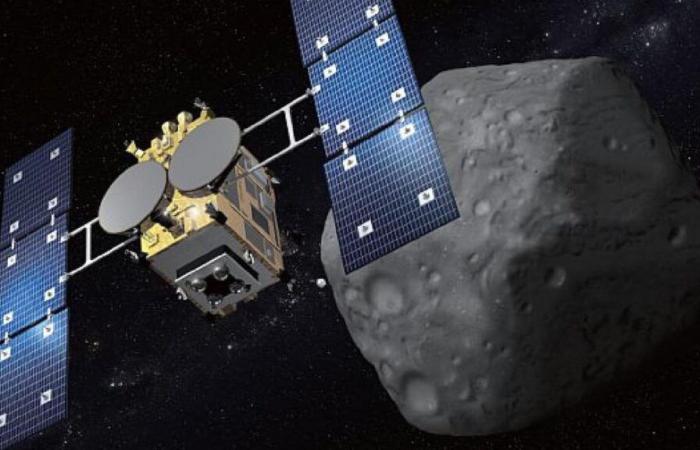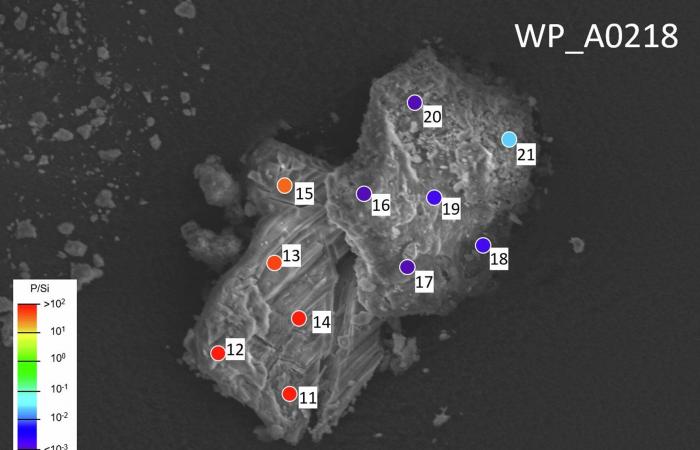Could asteroid grains be the source of the first building blocks of life on Earth? This is what recent discoveries made from dust from space suggest. These fragments, reported by a Japanese probe, could overturn our vision oforigin of life.
The return of these extraterrestrial samples to Earth in 2020 opened the door to new hypotheses. These grains taken from Ryugu, an asteroid located beyond Jupiter, contain crucial elements for the formation of biological molecules.
In 2014, the Japanese space agency JAXA sent the Hayabusa2 probe to Ryugu, a carbon-rich C-type asteroid. The objective? Take surface samples to learn more about its composition. The researchers used a specially designed chamber to manipulate these fragments, allowing analysis by vacuum spectral microscope. The samples, placed on gold-plated mirrors to avoid contamination, revealed a major surprise: the presence of hydrated compounds, including magnesium, ammonium and phosphorus.
These elements, particularly phosphorus, play an essential role in terrestrial biology. Found in nucleic acids like DNA and RNA, they are the very foundations of life as we know it. The fact that Ryugu grains contain it suggests that asteroids may have sowed these chemical building blocks on our planet billions of years ago.
The analysis also showed that these particles come from distant regions of our Solar System, beyond Jupiter. If they had been formed closer to the Sun, they would have evaporated under the influence of heat. This supports the idea that asteroids can transport valuable molecules through space, even over long distances.
Credit: Nature Astronomy (2024).
The discovery of ammonium in these samples reinforces this hypothesis. This compound, capable of releasing hydrogen and nitrogen when it decomposes, is also crucial for biological processes. It then becomes plausible that these elements were integrated into the first terrestrial organisms.
These results mark a significant advance in understanding the origin of the chemical compounds that may have initiated life. If these asteroids contributed to the formation of the first organic molecules on Earth, our entire conception of the evolution of life could be re-evaluated.
Asteroid Ryugu and the Hayabusa2 mission
The asteroid Ryugu is a C-type star, rich in carbon, located approximately 300 million kilometers of the Earth. It follows an orbit similar to that of our planet, which made it an ideal target forexploration spatial. This type of asteroid is particularly interesting because it contains materials primitives of the Solar System.
Ryugu contains organic compounds and hydrated elements like magnesium and phosphorus. These materials are crucial because they may have played a role in the appearance of life on Earth. The discovery of such elements in these samples reinforces the hypothesis that asteroids brought to Earth the first chemical building blocks necessary for the formation of living organisms.
In 2014, the Japanese space probe Hayabusa2 was sent to Ryugu by the JAXA space agency. The mission aimed to collect samples of its surface and debris from collisions caused by the probe. The collected materials were then returned to Earth in 2020, where they are being studied by researchers around the world.
Scientists identified compounds such as ammonium and phosphorus in the samples. Ammonium, as it decomposes, releases hydrogen and nitrogen, fundamental elements for biological chemistry. As for phosphorus, it is essential for the formation of molecules such as DNA and RNA, pillars of cellular life.







